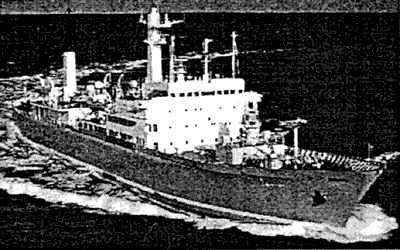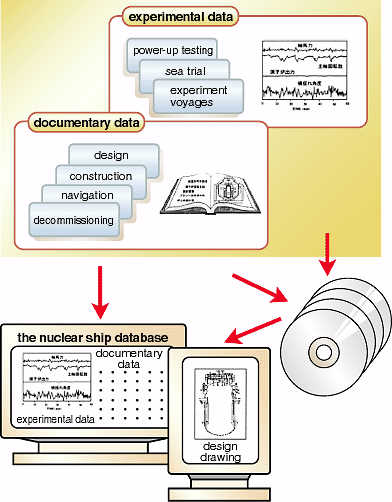 |
|||||
|
|||||
 |
|||||
|
|||||
| Construction of the nuclear ship "MUTSU" was completed in 1970, the power-up testing in 1990, the experimental
voyages in 1990-1992, and then decommissioning was carried out
at the home port Sekinehama in 1992-1995. "MUTSU" was the first nuclear ship in Japan which was designed and constructed
by Japanese independent technology. All the engineering data of
design, construction, operation and decommissioning of "MUTSU" were systematically arranged and preserved as a database. The actual data of a nuclear ship in Japan can be utilized in the development of the advanced marine reactor and in research for power reactors and ships. The nuclear ship database consists of engineering data related to design basis, application documents for nuclear reactor construction permit, design and construction documents related to nuclear and thermal hydraulic characteristics, reactor operation records, and experimental data in the power-up testing and the voyages. The experimental data for the results of the power-up testing, sea trial and the experimental voyages had been registered. The registered data were categorized to power plant variables such as reactor power output and main engine revolution, navigating ones such as ship speed, and natural ones such as wave height and seawater temperature. The database enables these to be searched and displayed in many ways. For example, the reactor responses such as power output to changes in sea conditions such as the height of sea waves in order to maintain the same ship speed, can be easily displayed. About 24,000 documentary data were classified, arranged and stored in three ways; design drawings read by scanner, microfilms, or as the original reports. The users can confirm various data in graphical form and transfer them to their own computer by direct operation of the nuclear ship database at JAERI. The total database system was made available in September 1998, and has already been partly utilized by universities, research institutes and others. |
| Reference M. Kyoya et al., Development of the Nuclear Ship Database, JAERI-Data/Code 95-003 (1995). |
| Select a topic in left column |
|
Persistent Quest-Research Activities 1998 Copyright(c)Japan Atomic Energy Research Institute |